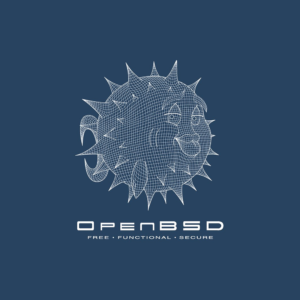
 Selecting the appropriate operating system (OS) for dedicated servers can be crucial as it may affect compatibility, security, and performance. The possibilities are many and range from the easy-to-use Ubuntu Server, which is renowned for its support for clouds and containers, to the reliable and secure Debian, and the enterprise-level CentOS. This article examines 12 top server operating systems, their features, and advantages, meeting a range of server requirements.
Selecting the appropriate operating system (OS) for dedicated servers can be crucial as it may affect compatibility, security, and performance. The possibilities are many and range from the easy-to-use Ubuntu Server, which is renowned for its support for clouds and containers, to the reliable and secure Debian, and the enterprise-level CentOS. This article examines 12 top server operating systems, their features, and advantages, meeting a range of server requirements.
For dedicated servers, an operating system (OS) serves as the backbone that synchronizes all of the server’s operations and works as an essential conduit between the hardware and the programs that run on it. To maintain smooth server operation, it effectively distributes the server’s hardware resources – such as CPU, memory, disk space, and network connections – among different applications. The OS manages the file system, organizes data, and facilitates data retrieval so that applications may access and store data more efficiently and securely. It also guarantees security by providing features and tools, such as user authentication systems, encryption, and access restrictions, to guard against illegal access and data breaches.
Another essential OS job is network administration, which permits data sharing and connectivity by allowing network communication between the server and other servers or appliances. Users may interact with, configure, and administer the server and its applications using the OS’s graphical or command-line user interface.
Furthermore, an OS facilitates application interoperability, offering a platform on which different services and apps, such as web servers, databases, and corporate apps, may operate. In addition, through an OS, server users may reduce the possibility of human mistake and increase productivity by automating common processes with the use of automation and scripting features. Finally, the server operating system provides system monitoring and logging capabilities that let administrators keep an eye on server performance, identify problems, and make sure everything is operating at peak efficiency.
Let’s delve into the characteristics of twelve of the most prevalent operating systems used in dedicated servers:
The Ubuntu Server, thanks to its intuitive design and exhaustive support, is commonly utilized for dedicated servers. It caters to a broad spectrum of users. For beginners and small companies, it’s an approachable interface for server management by offering thorough documentation and a thriving community for assistance and troubleshooting. Its appeal extends to those with limited IT knowledge, enabling the efficient configuration and management of their server operations. However, newcomers may face a steep learning curve attributed to the magnitude of Ubuntu’s capabilities and occasional deep-dives into command-line operations.
Despite this, the cutting-edge features of Ubuntu Server and its support for latest apps and programming languages empowers developers and businesses to design and apply modern applications. For demanding applications seeking scalability and flexibility, its compatibility with cloud services and containerization technologies like Docker and Kubernetes strengthens its allure. While these benefits are significant, larger corporations might struggle with long-term support (LTS) versions. The release of frequent updates and new versions might pose challenges in maintaining continuity and compatibility in highly customized or intricate server systems.
For its reliability and security, Debian is considered the preferred operating system for dedicated servers catering to several user types, like system administrators and top-tier company executives. The access to thoroughly tested and dependable software is guaranteed courtesy of its expansive software repository and rigid policy for package inclusion. This feature is particularly beneficial for those managing critical applications or services requiring high reliability and uptime. Given its devotion to open-source principles, Debian capitalizes on a vast community support network that offers invaluable assistance and resources, especially for those with tight budgets for commercial software.
The stability features of Debian might sometimes be seen as negatives, particularly for those looking for the latest software versions. Due to Debian’s testing and inclusion process, newer application versions may take a while to appear, potentially delaying access to recent features or improvements. This conservative approach to application updates might frustrate developers and tech enthusiasts who want to use cutting-edge technology. Moreover, Debian’s emphasis on command-line management over graphical tools can present a steep learning curve for beginners or users familiar with user-friendly interfaces, possibly making Debian a less attractive OS for those without substantial Linux administration experience.
In the dedicated server market, CloudLinux stands out among web hosting companies and businesses hosting multiple client websites on a single server. Its groundbreaking LVE (Lightweight Virtual Environment) technology makes shared hosting environments much more stable and efficient, as each tenant can have precise resource allocation, preventing any one site from hogging resources. This level of control is revolutionary for hosting companies striving to provide reliable service without constant human intervention.
Additionally, CloudLinux can enhance server security with features like CageFS, which isolates each user’s filesystem, thereby preventing the spread of security vulnerabilities amongst tenants. In shared hosting environments, such security measures are essential as they protect users from each other and minimize risks.
On the downside, CloudLinux may not be ideal for businesses running dedicated servers in-house rather than reselling hosting services, given its specialized nature. While it’s beneficial for shared web hosting, its advanced features and security enhancements may not be necessary in a single-user setting, which could complicate server administration without providing equivalent benefits. Another potential financial drawback for startups or small businesses on a tight budget could be the need for a CloudLinux subscription, especially when free alternatives are available.
With its close ties to Red Hat Enterprise Linux (RHEL), CentOS offers a robust OS for dedicated servers that appeals to many by blending free accessibility with enterprise-grade dependability. Since it’s compatible with RHEL, customers receive a high level of safety and trustworthiness, much appreciated by system administrators and businesses that prioritize ongoing performance for their critical applications. Each version’s comprehensive testing further assures system stability.
Yet, the transition to CentOS Stream, a rolling release, could present potential difficulties, especially for those relying on the traditional CentOS for its predictable, long-term support model. This shift might deter users who prefer a static release cycle for increased stability over fresh features. Additionally, while CentOS’s close connection to RHEL offers numerous advantages, it also implies the system might not be as avant-garde as other distributions, limiting its appeal to developers and tech innovators seeking the most recent software developments. The need for greater technical skills to navigate and fine-tune CentOS may also be an obstacle for less experienced users or small businesses without specific IT support, making it a suboptimal choice for these users.
 Combined with other Microsoft products, Windows Server can be a formidable OS for dedicated servers. Many IT professionals, particularly those in small to medium-sized businesses lacking extensive Linux knowledge, prefer it due to its easy-to-use graphical user interface (GUI) and familiar Windows environment. Companies heavily reliant on Microsoft’s infrastructure might benefit significantly from the smooth interaction with Microsoft’s software stack, including Active Directory, Exchange, and SharePoint. This seamless integration simplifies deployment and administrative tasks.
Combined with other Microsoft products, Windows Server can be a formidable OS for dedicated servers. Many IT professionals, particularly those in small to medium-sized businesses lacking extensive Linux knowledge, prefer it due to its easy-to-use graphical user interface (GUI) and familiar Windows environment. Companies heavily reliant on Microsoft’s infrastructure might benefit significantly from the smooth interaction with Microsoft’s software stack, including Active Directory, Exchange, and SharePoint. This seamless integration simplifies deployment and administrative tasks.
However, Windows Server licenses can be quite costly, especially for nascent and small businesses keeping a tight budget. Windows Server, unlike many free and open-source Linux versions, requires a financial obligation. The same applies to many services and applications exclusively designed for the Windows environment. Moreover, even though Windows Server security has improved, system managers may need to handle extra patching and security-maintenance tasks as Windows servers have typically faced higher security threats than Linux servers. Another aspect to consider is the OS’s resource usage. Windows Server usually needs more system resources than some of its more economical Linux counterparts, which might necessitate more potent hardware configurations and increase the total cost of ownership.
 Dedicated servers can significantly profit from BSD/FreeBSD due to its known stability, leading-edge networking options, adaptability, and stringent security. Its UNIX-like setting is highly prized by seasoned system administrators and IT experts who value an operating system with an emphasis on performance and network efficiency. The fame of the ZFS filesystem for its reliability and data integrity, as well as the comprehensive documentation, makes FreeBSD a top choice for anyone managing large databases or applications that require a lot of storage.
Dedicated servers can significantly profit from BSD/FreeBSD due to its known stability, leading-edge networking options, adaptability, and stringent security. Its UNIX-like setting is highly prized by seasoned system administrators and IT experts who value an operating system with an emphasis on performance and network efficiency. The fame of the ZFS filesystem for its reliability and data integrity, as well as the comprehensive documentation, makes FreeBSD a top choice for anyone managing large databases or applications that require a lot of storage.
Despite these benefits, those unfamiliar with Unix or those who expect extensive commercial software support, often provided with Linux distributions or Windows Server, may find FreeBSD’s appeal quite limited. The FreeBSD community, while knowledgeable and supportive, is smaller than those for larger Linux distributions, which may affect the availability of quick help or patches for rare issues. Additionally, compared to other operating systems, some users may find hardware compatibility to be more limited, making installations on less common or newer hardware platforms more of a challenge. This requires careful planning and verification, especially for those wishing to utilize the latest server technology. If certain Linux-based applications or proprietary software do not support FreeBSD, this could pose a problem for businesses and individuals, leading them to opt for more widely supported platforms.
With the switch to a rolling release model, CentOS users may find Rocky Linux a particularly appealing alternative. Rocky Linux has emerged as a significant contender in the server operating system market. System administrators and enterprises requiring enterprise-level stability without the additional costs of a Red Hat subscription may select it as their preferred choice due to its binary compatibility with Red Hat Enterprise Linux (RHEL). The platform inherits RHEL’s reliability, security, and performance.
This operating system, with its commitment to being free and open-source, attracts organizations and developers looking to build and deploy applications on a reliable platform without the need to worry about licensing costs. Due to the growing support and contributions from the community, users can expect a robust software ecosystem and regular updates.
Although Rocky Linux is quite new, the maturity of its ecosystem cannot match that of other long-established distributions. This situation might post difficulties for users requiring special tools or substantial support from third-party software. Compatibility with certain hardware and proprietary we may witness a slow uptake compared to more popular distributions until its use becomes widespread. Those heavily relying on paid support might find their options more limited compared to with RHEL or even Ubuntu LTS editions. Such users may have to count on community forums and documentation for aid or problem-solving.
 Fitting perfectly into business environments demanding top-notch security, reliability, and support, Red Hat Enterprise Linux (RHEL) stands as a brilliant OS option for dedicated servers. Sectors with rigorous operating conditions prefer it due to its well-earned reputation for steadiness and performance, attributable to comprehensive testing and certification. Companies seeking to minimize downtime and ensure compatibility with a wide range of applications might find RHEL’s extensive commercial support and solid software ecosystem to be the perfect OS selection.
Fitting perfectly into business environments demanding top-notch security, reliability, and support, Red Hat Enterprise Linux (RHEL) stands as a brilliant OS option for dedicated servers. Sectors with rigorous operating conditions prefer it due to its well-earned reputation for steadiness and performance, attributable to comprehensive testing and certification. Companies seeking to minimize downtime and ensure compatibility with a wide range of applications might find RHEL’s extensive commercial support and solid software ecosystem to be the perfect OS selection.
Red Hat’s collaborations with leading software and hardware providers ensure smooth OS function even in intricate IT environments. The OS gains from these partnerships. Red Hat Insights, a high-end analytics solution, supports predictive issue handling and prevention before they impact the system, which you can also access through the RHEL subscription model.
For startups, small firms, or private individuals, the cost of RHEL’s subscription model may prove a significant constraint. It is a hefty financial commitment in comparison to free or cheaper alternatives, even if it provides the highest levels of security and support. Additionally, RHEL’s conservative approach to updates may repel developers or businesses relying on the latest software versions, pushing them towards OS distributions with more frequent updates. While this conservative update strategy may contribute to system stability, it could create difficulties for users needing more cutting-edge tools for deployment or development.
CentOS users, since moving to a rolling release system, have predominantly opted for AlmaLinux as their preferred operating software for dedicated servers. This is largely because AlmaLinux presents a reliable and cost-free solution. As AlmaLinux maintains a 1:1 binary compatibility with Red Hat Enterprise Linux (RHEL), it is a viable choice for system administrators, enterprises, and anyone relying on CentOS for vital server functions, inheriting robustness, security, and performance from RHEL. This compatibility assures smooth transition for existing CentOS users and applications, with minimal disturbance.
The significant merits of AlmaLinux include robust community backing and open-source format of the operating system, offering users a dynamic and transparent operating system platform that evolves via user feedback and inputs. AlmaLinux, being free, is particularly appealing to small and new businesses that require enterprise-level reliability without the burden of paid subscriptions.
Despite these merits, AlmaLinux, being a relatively new distribution, may raise queries about upkeep and long-term viability, in comparison with more established distributions. Commercially sponsored distributions might still be preferred by organizations with specialized or advanced support requirements, even when the aim is to provide a community-driven dependable alternative. Additionally, clients seeking the latest advancements or with specific needs may perceive a focus on stability and compatibility as a limitation if AlmaLinux does not incorporate the most recent software versions.
An advanced operating system gaining popularity among system administrators and developers is Fedora Server. This acts as a proving ground for newer technologies that might be incorporated into Red Hat Enterprise Linux (RHEL) in the future, offering users insight into potential future trends in enterprise computing. Given its forward-leaning approach, Fedora Server poses as the ideal option for those seeking to experiment with or deploy the latest server technology and applications.
Fedora Server offers numerous advantages, with its quick release cycle being one of the most significant. This ensures that the OS is always updated with the latest software and security enhancements. This flexibility allows users to benefit from the most recent advancements in network, security, and system performance created by the community.
However, the very same feature that makes Fedora a hit amongst tech enthusiasts and innovators – its cutting-edge nature – might also present some challenges, specifically when it comes to stability and long-term maintenance. The swift pace of upgrades and new releases might not be suitable for settings where long-term stability and predictability are crucial, like in critical production servers in corporate environments. Moreover, although Fedora’s community support is robust and enthusiastic, it lacks the official commercial support structure that businesses might require for mission-critical applications. Hence, it might not be the perfect choice for organizations requiring assured maintenance and service level agreements (SLAs).
On the other hand, openSUSE Leap strikes a fine balance between stability and leading-edge technology. This makes it an attractive choice for developers and businesses seeking a solid OS for their dedicated servers. It is built upon the strong foundation of SUSE Linux Enterprise (SLE), ensuring enterprise-grade stability and security. Therefore, it can be an ideal choice for businesses needing a dependable environment for their crucial applications. Further, openSUSE Leap employs a unique development approach that allows users to obtain access to newer software and tools swiftly compared to typical enterprise distributions, without impacting overall system reliability.
Due to this blend of capabilities, openSUSE Leap is particularly appealing to small and medium businesses, along with tech enthusiasts seeking a stable yet up-to-date platform for development or production purposes. Additionally, the OS comes with an extensive software repository and YaST. The latter is a user-friendly configuration tool that simplifies system administration tasks.
For users with specific requirements, openSUSE Leap’s positioning between ground-breaking and stable releases may pose some difficulties. Those requiring the latest software developments may find Leap a bit outpaced by swifter evolving distributions. Conversely, enterprises prioritizing long-term support over access to the newest features might regard Leap’s update strategy as too aggressive. Such organizations may prefer the predictability offered by distributions with lengthier release cycles and support periods. Furthermore, whilst openSUSE has strong community support, it might not match the specialized commercial support provided by larger, corporate-focused distributions.
SUSE Linux Enterprise Server (SLES) is a server operating system aimed specifically at businesses needing high levels of server reliability, scalability, and security. It stands out for its robust enterprise-level features such as extensive testing and certification processes, wide-ranging hardware support, and stability in complex IT settings. For enterprises requiring guaranteed uptime and vendor support, SLES’s subscription-based model could be a perfect choice, offering customers access to specialist support, updates, and patching.
As for virtualization and cloud technologies, SLES offers robust support, potentially vital for businesses looking to modernize operations or move towards hybrid IT environments. Additionally, SLES often integrates seamlessly with existing IT structures. The platform’s emphasis on security enables easier protection of sensitive data through preventative action and regular updates.
The subscription fee for SLES may deter startups, small businesses, or those with limited budgets, who may instead opt for free, community-supported Linux OS versions. Furthermore, while SLES offers a secure and dependable environment, its release cycle may lag behind more rapidly evolving Linux distributions. Consequently, those prioritizing up-to-date security might struggle to access the latest software developments. While this cautious approach to updates may irk developers and tech enthusiasts craving the newest features and tools, it does ensure system reliability.
LowEndBox is a go-to resource for those seeking budget-friendly hosting solutions. This editorial focuses on syndicated news articles, delivering timely information and insights about web hosting, technology, and internet services that cater specifically to the LowEndBox community. With a wide range of topics covered, it serves as a comprehensive source of up-to-date content, helping users stay informed about the rapidly changing landscape of affordable hosting solutions.
























Good coverage of all the major server OS. Few missing were, less frequently used, although available for the challenge takers. I am no expert in server management, still, here I my 2 cents.
Alpine acts as a great server os where the role of the server is more network and routing management focused. Its very lightweight allowing all the logging and routing employ maximum resources. I have heard its good and reliable in terms of network security as well.
Although not recommended for the easy learners, I have seen many adventures pro users deploying Arch as the server os. There could be a bit of trouble learning few things, but Arch overall offers great community support as well as access to minute configurations and squeezing of maximum juice from the available hardware. Security in Arch linux is again robust, but requires facing and learning few steep uphill climbs. For a newcomer to Arch, a Manjaro based server would a great easier learning experience.
Yes, Arch is always an adventure :-)
In this matter, I’ll need to discuss it with you. Which is not something you would find me doing very often! I take pleasure in reading articles that provoke strong emotions in their readers. In addition, many thanks for allowing me to share my thoughts here!
Excellent post. I recently discovered your blog and wanted to express my sincere appreciation for the captivating content you have shared. In any case, I will be subscribing to your feed and I anticipate that you will post again in the near future.
You show a graphic but fail to mention OpenBSD. That is my goto OS for public facing servers. Only cracked twice in its history. Installation is almost braindead leaving you a server that is totally locked down. You do have to open up what you want exposed to the public, but that is much better than hoping you haven’t missed something that should be locked down.